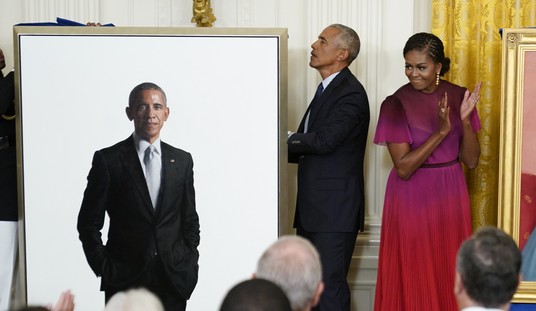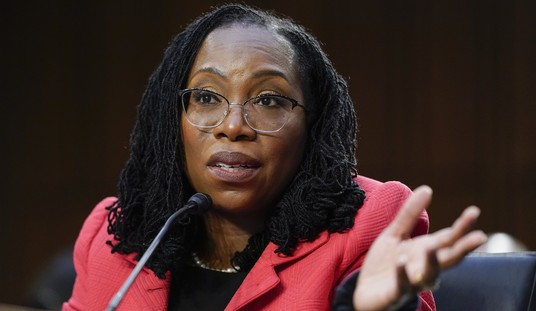Last week, an ad from Gillette caused controversy by targeting “toxic masculinity” in a bid to sell shaving cream. The ad changed the company’s slogan from “the best a man can get,” to “the best a man can be,” and showed men standing up against “toxic” behaviors from other men. The existence of an ad like this seems to suggest that companies selling products geared toward men have decided that “toxic masculinity” is such an important issue in our society that they can’t sell their products without addressing it. And the term certainly has settled itself very firmly into our lexicon. But all this does beg the question: is there still a way — in the age of modern feminism — to be traditionally masculine that is positive?
In a recent video from Campus Reform, Emma Meshell asked passersby at Georgetown University where they’d draw the line between “toxic” and “normal” masculinity. The question — which was in response to the Gillette ad — drew a lot of blank stares. “That’s a tough one,” one student admitted. “Wow, that’s a hard question,” confessed another. One student told her she thought it was “a very gray line.” The most thoughtful answer came from a student who said the line should be drawn “where somebody feels that just because of masculine norms they have to act a certain way and they’re uncomfortable with that.”
Every student in the video adamantly expressed that “toxic masculinity” is a serious problem in our society. One student called it a “very serious topic,” while another said that it’s “a huge issue.” But very few of them were able to even come up with a coherent definition for “toxic masculinity” let alone a way of differentiating between “toxic” and “non-toxic” masculinity.
Granted, this is a very small sample size — maybe just around the corner were a bunch of students with a clearer sense of the issue — but it does beg the question: has “toxic masculinity” come to be synonymous with masculinity itself? Or is there still a place for traditionally male behavior within the narrative of modern feminism?
Could these students — or any college students who subscribe to the modern feminist ideology — come up with an example of “non-toxic masculinity”? Anyone can think of things that men might do that are negative — the Gillette ad suggests bullying, catcalling, and workplace harassment — but those things aren’t the extent of masculinity. In fact, they’re more like its seedy underbelly. And modern feminists can tell us all sorts of ways that men can be “non-toxic” by acting like women. But how about ways that men can be men without being toxic? Has modern feminism completely jettisoned the notion that that could be possible?
College is a place where the kinds of male behaviors that might be considered “toxic” have the capability to run rampant. A bunch of hormonal, teenage males are suddenly released into the world sans supervision and the possibility that their base male urges might run amok is fairly high. But, if the worldview they’re released into only offers either this unchecked “toxicity” or traditionally feminine behaviors as the options for being male, it’s no wonder there’s so much confusion and bad behavior!
Perhaps the student who called it “a gray line” wasn’t so far off. The same instinct that causes a man to punch a guy in the face at a bar because he looked at him funny can be channeled into standing up to protect a woman from an attack. The same instinct that causes a man to ogle every woman who passes him by can be channeled into the deep and passionate love of one woman for all time.
The urges men have aren’t going to change (no matter how many modern feminists scream at them about it), it’s what they do with those urges that has always been what matters. If we don’t offer college students examples of positive masculinity that really are masculine — as opposed to telling them that the only way to be a “non-toxic” male is to act like a woman — we shouldn’t be surprised if they behave badly.
Prince Charming, knights in shining armor, cowboys, and superheroes. These are the stories our culture has created through the years to depict the ways that men can be men. They’re stock, two-dimensional characters that serve a three-dimensional purpose: to illustrate what it looks like to channel your baser urges and be a man. There’s a reason these characters and tropes exist. It’s to teach people like these college students what to do. To show them — through allegory and exaggeration — how to find a way through all the rage, and the passion, and the sexual hunger, and come out the other side a man.
If we lose that idea — if the knights and cowboys of the world are branded as “toxic males” — then we’re going to see a whole bunch more “toxicity,” not less. It isn’t that all men are going to be cowboys (most probably won’t), it’s that all men need cowboys — or knights, or Prince Charming, or Superman — to show them the way. The fiercely corralled and focused masculinity those characters display is as useful to a computer programmer as it is to an astronaut. We need more masculinity, not less. But it begins with knowing what that means. And if the Campus Reform video is any indication, it looks like we’ve got a long way to go.









Join the conversation as a VIP Member